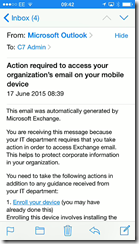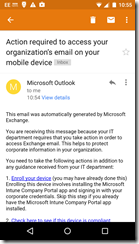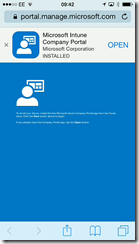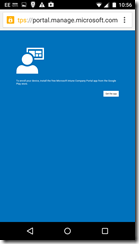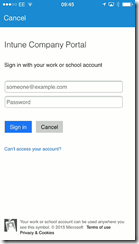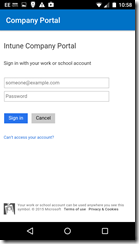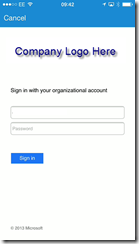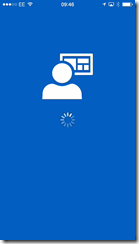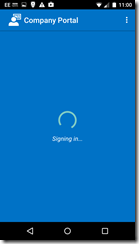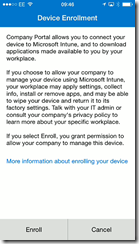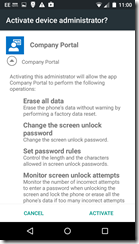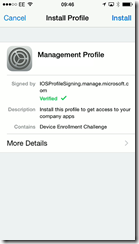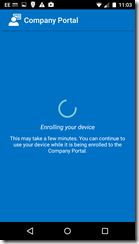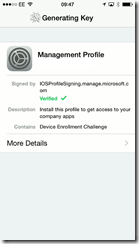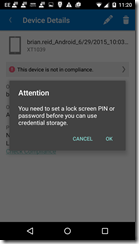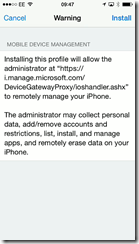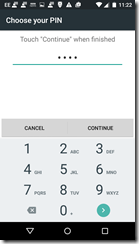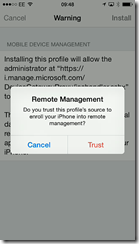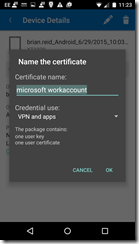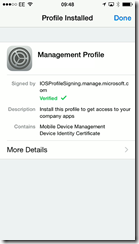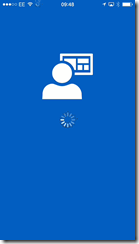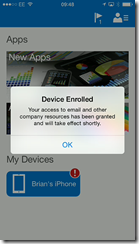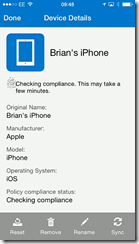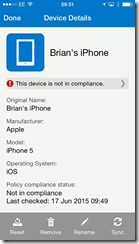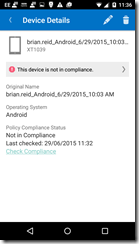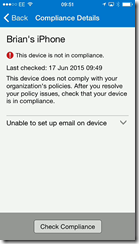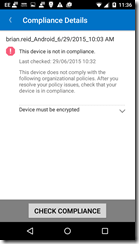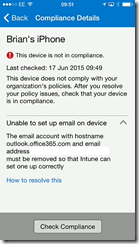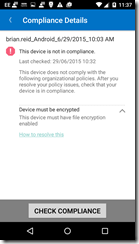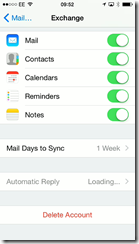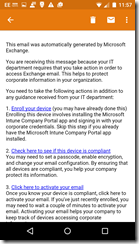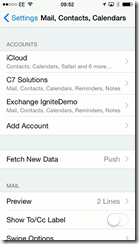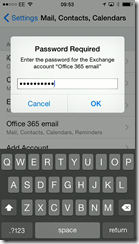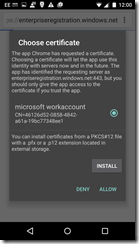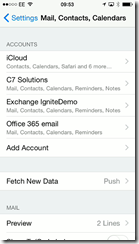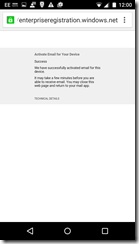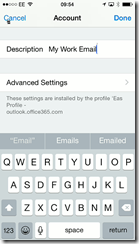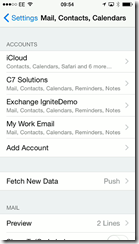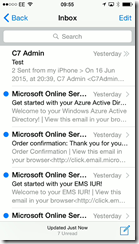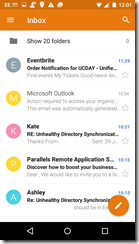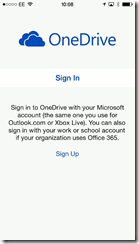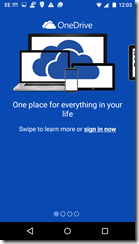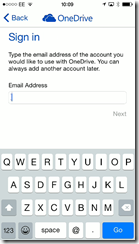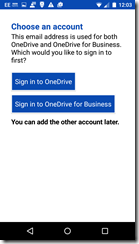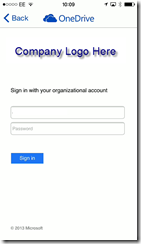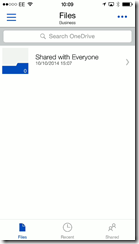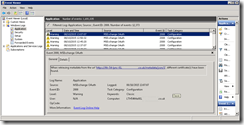Azure Active Directory has been long the read-only cousin of Active Directory for those Office 365 and Azure users who sync their directory from Active Directory to Azure Active Directory apart from eight attributes for Exchange Server hybrid mode. Not any more. Azure Active Directory writeback is now available and in preview for some of the writeback types at the time of writing. This enabled objects to be mastered or changed in Azure Active Directory and written back to on-premises Active Directory.
This writeback includes:
- Devices that can be enrolled with Office 365 MDM or Intune, which will allow login to AD FS controlled resources based on user and the device they are on
- “Modern Groups” in Office 365 can be written back to on-premises Exchange Server 2013 CU8 or later hybrid mode and appear as mail enabled distribution lists on premises. Does not require AAD Premium licences
- Users can change their passwords via the login page or user settings in Office 365 and have that password written back online.
- Exchange Server hybrid writeback is the classic writeback from Azure AD and is the apart from Group Writeback is the only one of these writebacks that does not require Azure AD Premium licences.
- User writeback from Azure AD (i.e. users made in Office 365 in the cloud for example) to on-premises Active Directory
- Windows 10 devices for “Azure AD Domain Join” functionality
All of these features (apart from Exchange Hybrid writeback) require AADSync and not DirSync. Install and run the AADConnect program to migrate from DirSync to AADSync and then in the Synchronization Options on rerunning the AADConnect wizard you can add all these writeback functions.
Preparing for Device Writeback
If you do not have a 2012 R2 or later domain controller then you need to update the schema of your forest. Do this by getting a Windows Server 2012 R2 ISO image and mounting it as a drive. Copy the support/adprep folder from this image or DVD to a 64 bit domain member in the same site as the Schema Master. Then run adprep /forestprep from an admin cmd prompt when logged in as a Schema Admin. The domain member needs to be a 64 bit domain joined machine for adprep.exe to run.
Wait for the schema changes to replicate around the network.
Import the cmdlets needed to configure your Active Directory for writeback by running Import-Module ‘C:\Program Files\Microsoft Azure Active Directory Connect\AdPrep\AdSyncPrep.psm1’ from an administrative PowerShell session. You need Azure AD Global Admin and Enterprise Admin permissions for Azure and local AD forest respectively. The cmdlets for this are obtained by running the Azure AD Connect tool.
$accountName = "domain\aad_account" #[this is the account that will be used by Azure AD Connect Sync to manage objects in the directory, this is an account in the form of AAD_number].
Initialize-ADSyncDeviceWriteBack -AdConnectorAccount $accountName -DomainName contoso.com #[domain where devices will be created].
This will create the “Device Registration Services” node in the Configuration partition of your forest as shown:
![image image]()
To see this, open Active Directory Sites and Services and from the View menu select Show Services Node. Also in the domain partition you should now see an OU called RegisteredDevices. The AADSync account now has permissions to write objects to this container as well.
In Azure AD Connect, if you get the error “This feature is disabled because there is no eligible forest with appropriate permissions for device writeback” then you need to complete the steps in this section and click Previous in the AADConnect wizard to go back to the “Connect your directories” page and then you can click Next to return to the “Optional features” page. This time the Device Writeback option will not be greyed out.
Device Writeback needs a 2012 R2 or later AD FS server and WAP to make use of the device info in the Active Directory (for example, conditional access to resources based on the user and the device they are using). Once Device Writeback is prepared for with these cmdlets and the AADConnect Synchronization Options page is enabled for Device Writeback then the following will appear in Active Directory:
![image image]()
Not shown in the above, but adding the Display Name column in Active Directory Users and Computers tells you the device name. The registered owner and registered users of the device are available to view, but as they are SID values, they are not really readable.
Preparing for Group Writeback
Writing Office 365 “Modern Groups” back to Active Directory on-premises requires Exchange Server 2013 CU8 or later schema updates and servers installed. To create the OU and permissions required for Group Writeback you need to do the following.
Import the cmdlets needed to configure your Active Directory for writeback by running Import-Module ‘C:\Program Files\Microsoft Azure Active Directory Connect\AdPrep\AdSyncPrep.psm1’ from an administrative PowerShell session. You need Domain Admin permissions for the domain in the local AD forest that you will write back groups to. The cmdlets for this are obtained by running the Azure AD Connect tool.
$accountName = "domain\aad_account" #[this is the account that will be used by Azure AD Connect Sync to manage objects in the directory, this is an account usually in the form of AAD_number].
$cloudGroupOU = "OU=CloudGroups,DC=contoso,DC=com"
Initialize-ADSyncGroupWriteBack -AdConnectorAccount $accountName -GroupWriteBackContainerDN $cloudGroupOU
Once these cmdlets are run the AADSync account will have permissions to write objects to this OU. You can view the permissions in Active Directory Users and Computers for this OU if you enable Advanced mode in that program. There should be a permission entry for this account that is not inherited from the parent OU’s.
At the time of writing, the distribution list that is created on writeback from Azure AD will not appear in the address book. To add it to the address book in Outlook etc. run Update-AddressList in Exchange Server. Once group writeback is prepared for using these cmdlets here and AADConnect has had it enabled during the Synchronization Options page, you should see the groups appearing in the selected OU as shown:
![image image]()
Preparing for Password Writeback
The option for users to change their passwords in the cloud and have then written back to on-premises (with multifactor authentication and proof of right to change the password) is also available in Office 365 / Azure AD with the Premium Azure Active Directory or Enterprise Mobility Pack licence.
To enable password writeback for AADConnect you need to enable the Password Writeback option in AADConnect synchronization settings and then run the following three PowerShell cmdlets on the AADSync server:
Get-ADSyncConnector | fl name,AADPasswordResetConfiguration
Get-ADSyncAADPasswordResetConfiguration -Connector "contoso.onmicrosoft.com - AAD"
Set-ADSyncAADPasswordResetConfiguration -Connector "contoso.onmicrosoft.com - AAD" -Enable $true
The first of these cmdlets lists the ADSync connectors and the name and password reset state of the connector. You need the name of the AAD connector. The middle cmdlet tells you the state of password writeback on that connector and the last cmdlet enables it if needed. The name of the connector is required in these last two cmdlets.
To set the permissions on-premises for the passwords to be written back the following script is needed:
$passwordOU = "DC=contoso,DC=com" #[you can scope this down to a specific OU]
$accountName = "domain\aad_account" #[this is the account that will be used by Azure AD Connect Sync to manage objects in the directory, this is an account usually in the form of AAD_number].
$cmd = "dsacls.exe '$passwordOU' /I:S /G '`"$accountName`":CA;`"Reset Password`";user'"
Invoke-Expression $cmd | Out-Null
$cmd = "dsacls.exe '$passwordOU' /I:S /G '`"$accountName`":CA;`"Change Password`";user'"
Invoke-Expression $cmd | Out-Null
$cmd = "dsacls.exe '$passwordOU' /I:S /G '`"$accountName`":WP;lockoutTime;user'"
Invoke-Expression $cmd | Out-Null
$cmd = "dsacls.exe '$passwordOU' /I:S /G '`"$accountName`":WP;pwdLastSet;user'"
Invoke-Expression $cmd | Out-Null
Preparing for Exchange Server Hybrid Writeback
Hybrid mode in Exchange Server requires the writing back on eight attributes from Azure AD to Active Directory. The list of attributes written back is found here. The following script will set these permissions for you in the OU you select (or as shown at the root of the domain). The DirSync tool used to do all this permissioning for you, but the AADSync tool does not. Therefore scripts such as this are required. This script sets lots of permissions on these eight attributes, but for clarify on running the script the output of the script is sent to Null. Remove the “| Out-Null” from the script to see the changes as they occur (the script also takes a lot longer to run).
$accountName = "domain\aad_account"
$HybridOU = "DC=contoso,DC=com"
#Object type: user
$cmd = "dsacls '$HybridOU' /I:S /G '`"$accountName`":WP;proxyAddresses;user'"
Invoke-Expression $cmd | Out-Null
$cmd = "dsacls '$HybridOU' /I:S /G '`"$accountName`":WP;msExchUCVoiceMailSettings;user'"
Invoke-Expression $cmd | Out-Null
$cmd = "dsacls '$HybridOU' /I:S /G '`"$accountName`":WP;msExchUserHoldPolicies;user'"
Invoke-Expression $cmd | Out-Null
$cmd = "dsacls '$HybridOU' /I:S /G '`"$accountName`":WP;msExchArchiveStatus;user'"
Invoke-Expression $cmd | Out-Null
$cmd = "dsacls '$HybridOU' /I:S /G '`"$accountName`":WP;msExchSafeSendersHash;user'"
Invoke-Expression $cmd | Out-Null
$cmd = "dsacls '$HybridOU' /I:S /G '`"$accountName`":WP;msExchBlockedSendersHash;user'"
Invoke-Expression $cmd | Out-Null
$cmd = "dsacls '$HybridOU' /I:S /G '`"$accountName`":WP;msExchSafeRecipientsHash;user'"
Invoke-Expression $cmd | Out-Null
#Object type: group
$cmd = "dsacls '$HybridOU' /I:S /G '`"$accountName`":WP;proxyAddresses;group'"
Invoke-Expression $cmd | Out-Null
#Object type: contact
$cmd = "dsacls '$HybridOU' /I:S /G '`"$accountName`":WP;proxyAddresses;contact'"
Invoke-Expression $cmd | Out-Null
Preparing for User Writeback
Currently in preview at the time of writing, you are able to make users in Azure Active Directory (cloud users as Office 365 would call them) and write them back to on-premises Active Directory. The users password is not written back and so needs changing before the user can login on-premises.
To prepare the on-premises Active Directory to writeback user objects you need to run this script. This is contained in AdSyncPrep.psm1 and that is installed as part of Azure AD Connect. Azure AD Connect will install Azure AD Sync, which is needed to do the writeback. To load the AdSyncPrep.psm1 module into PowerShell run Import-Module ‘C:\Program Files\Microsoft Azure Active Directory Connect\AdPrep\AdSyncPrep.psm1’ from an administrative PowerShell session.
$accountName = "domain\aad_account" #[this is the account that will be used by Azure AD Connect Sync to manage objects in the directory, this is an account usually in the form of AAD_number].
$cloudUserOU = "OU=CloudUsers,DC=contoso,DC=com"
Initialize-ADSyncUserWriteBack -AdConnectorAccount $accountName -UserWriteBackContainerDN $cloudUserOU
Once the next AADSync occurs you should see users in the OU used above that match the cloud users in Office 365 as shown:
![image image]()
Prepare for Windows 10 BYOD
Windows 10 devices can “domain join” Azure Active Directory and be written back to the on-premises Active Directory.
The AdSyncPrep.psm1 module supports the following two additional cmdlets to prepare your Active Directory for Windows 10 device writeback:
Initialize-ADSyncDomainJoinedComputerSync
Initialize-ADSyncNGCKeysWriteBack
These cmdlets are run as follows:
$accountName = "domain\aad_account" #[this is the account that will be used by Azure AD Connect Sync to manage objects in the directory, this is an account usually in the form of AAD_number].
$azureAdCreds = Get-Credential #[Azure Active Directory administrator account]
Initialize-ADSyncDomainJoinedComputerSync -AdConnectorAccount $accountName -AzureADCredentials $azureAdCreds
Initialize-ADSyncNGCKeysWriteBack -AdConnectorAccount $accountName
Once complete, open Active Directory Sites and Services and from the View menu Show Services Node. Then you should see the GUID of your domain under the Device Registration Configuration container.
![image image]()





























































